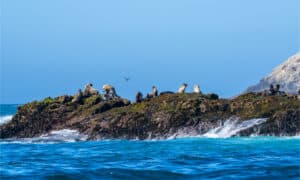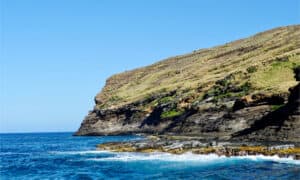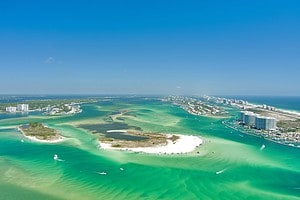We’d all have a lot more peace if we could get everyone on Earth to spread out equally. Even with the world’s population dramatically on the rise, there are still 5.12 acres of land on this planet for every single human being. That’s roughly four football fields per person! So it makes us wonder, what are the most populated islands on Earth?
Islands are water-surrounded expanses of sub-continental land. Oceanic, coral, tidal, barrier, artificial, and continental islands are among the six categories of islands. According to the World Atlas, there are too many islands to count, as they exist in lakes, seas, and oceans. Australia is technically an island, as it is a mass of land surrounded by water. However, geographers point out that a geographical land cannot be both a continent and an island. Hence, continents are out in our search. Below, we will explore the 10 most populated islands in the world.
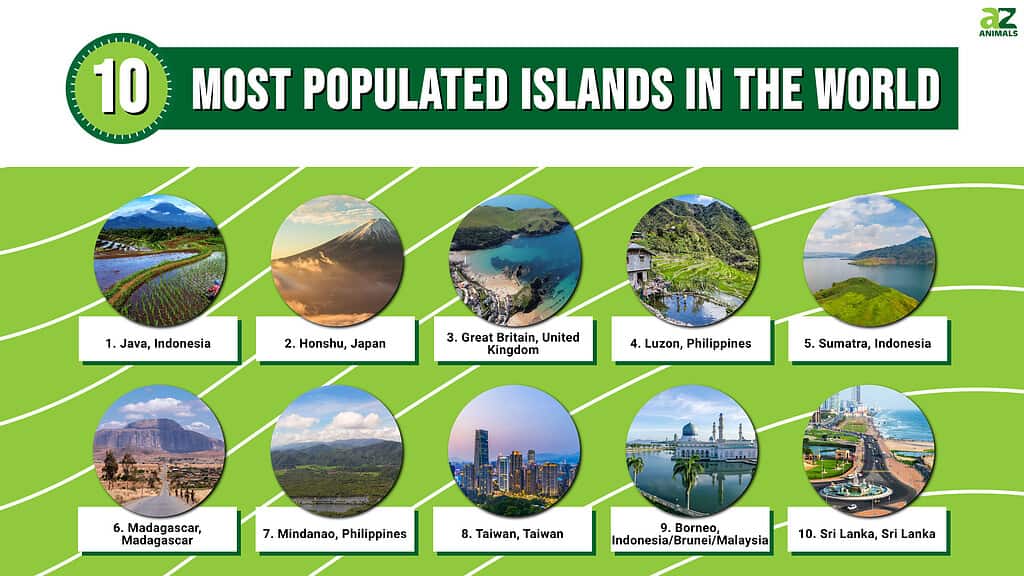
Crowded Paradise: The 10 Most Populated Islands in the World
10. Sri Lanka, Sri Lanka
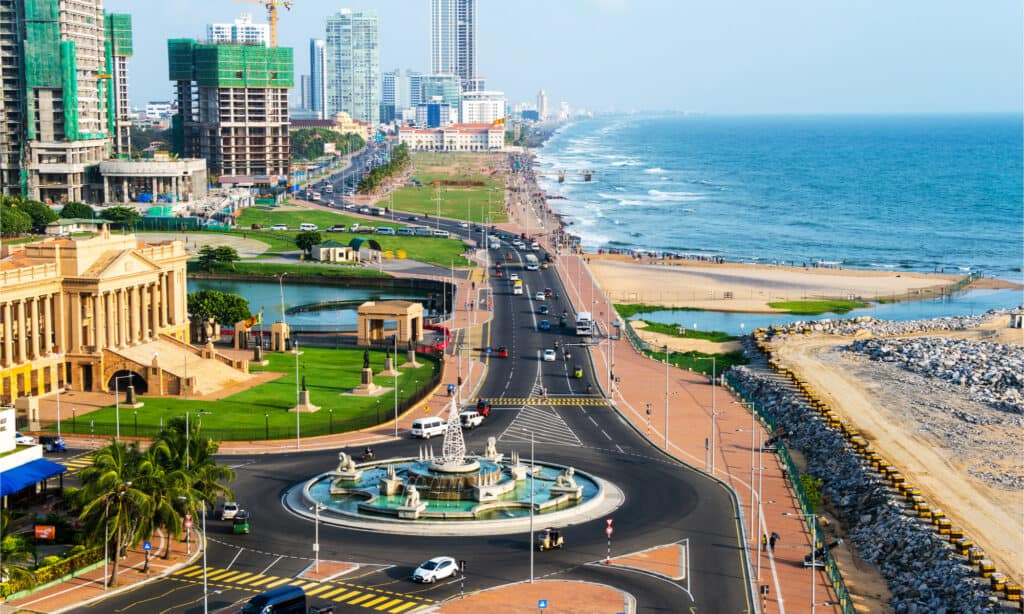
With 21,919,000 people, Sri Lanka is one of the most populated islands in the world.
©Madrugada Verde/Shutterstock.com
The Democratic Socialist Republic of Sri Lanka, historically known as Ceylon, is a South Asian island. It is a beautiful, pearl-shaped paradise off the coast of India and is rich in cultural, ethnic, and religious diversity. With 21,919,000 as its population, Sri Lanka made it into the top ten on our list. But due to a steadily declining fertility rate over the previous decade, Sri Lanka’s population has grown at a snail’s pace. However, in 2016, the numbers climbed by about 1.12%, a significant increase compared to previous years. It could be because of a rising standard of living, including better access to health care and cleaner living conditions. In addition, its flora and fauna contain many endemic species – 27 percent of the 3,210 flowering plants and 22 percent of the mammals.
9. Borneo, Indonesia/Brunei/Malaysia

The third-largest island in the world is Borneo.
©Yusnizam Yusof/Shutterstock.com
Borneo is an island in the Pacific Ocean’s extreme southwest. It’s the world’s third-largest island, only Greenland and New Guinea being larger. Borneo is the real-life Jungle Book, and it is home to one of the world’s oldest rainforests, dating back to 130 million years. The island lies in three countries: Indonesia, Brunei, and Malaysia, with 23,053,723 people living there. Ecotourism, which involves viewing the rainforest’s still-untouched wildlife, is one of the most significant benefits of Bornean tourism. The species residing here, such as the Bornean Chimpanzee, have become endangered because of companies that cut down the forest. The Bornean clouded leopard, proboscis monkey, orangutan, elephants, and gibbons are all native to the island but the Sumatran rhinoceros is now extinct.
8. Taiwan, Taiwan

©Avigator Fortuner/Shutterstock.com
Taiwan is an island in the western Pacific Ocean that lies roughly 100 miles (160 km) off the coast of southeastern China. With 23,865,820 people, it ranks eighth among the world’s most populous islands. Long hours working away from home, incompatible with family life, are blamed for the dropping birth rate. Vegetation covers nearly all of Taiwan’s land surface, a situation created by good rainfall and warm temperatures for most of the year. Trees once surrounded the island, but now only a little more than half of the land surface is forested. Some 45 mammal species are indigenous to Taiwan, such as the Formosan black bear, foxes, flying foxes, deer, and wild boars.
7. Mindanao, Philippines
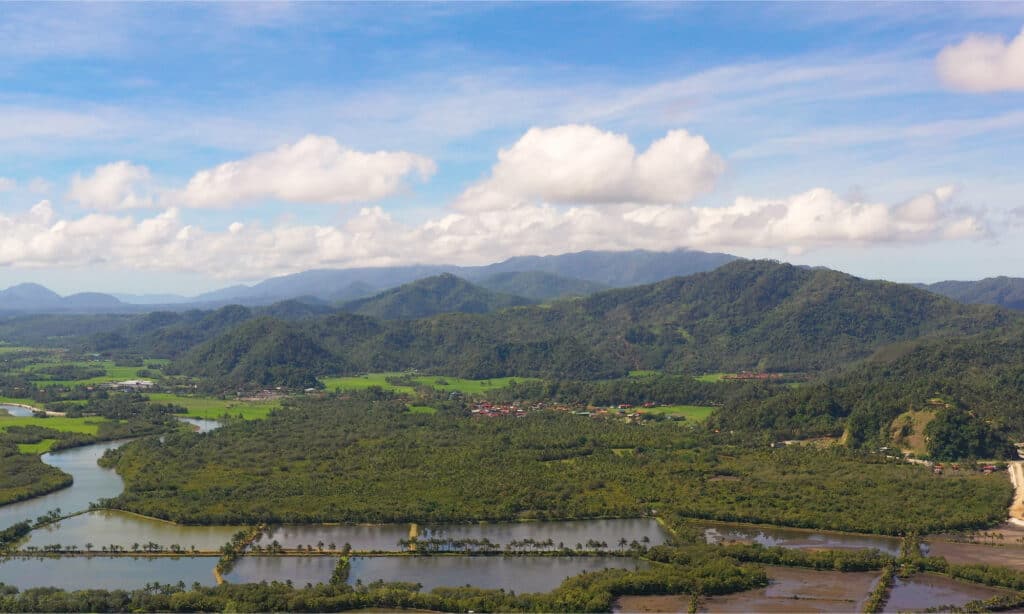
The second-largest island in the Philippines is Mindanao.
©Alex Traveler/Shutterstock.com
Mindanao is the second-largest island in the Philippines after Luzon. As of the 2021 census, Mindanao had 27,021,036 inhabitants, making it the seventh-most populous island in the world. It is the Philippines’ most religiously and culturally diverse island. The Philippines has a rapidly growing population, whose crude birth rates have remained more or less consistent at around 50 per thousand since 1900, and death rates have gradually decreased to 20 per thousand. If the current pace of population growth continues unabated, and evidence shows it will accelerate rather than slow shortly, the Philippines’ population will double well before the end of the century. Despite this, the island is home to many beautiful lakes and waterfalls and has endemic species, such as moonrats, cloud rats, earthworm mice, and shrews.
6. Madagascar, Madagascar
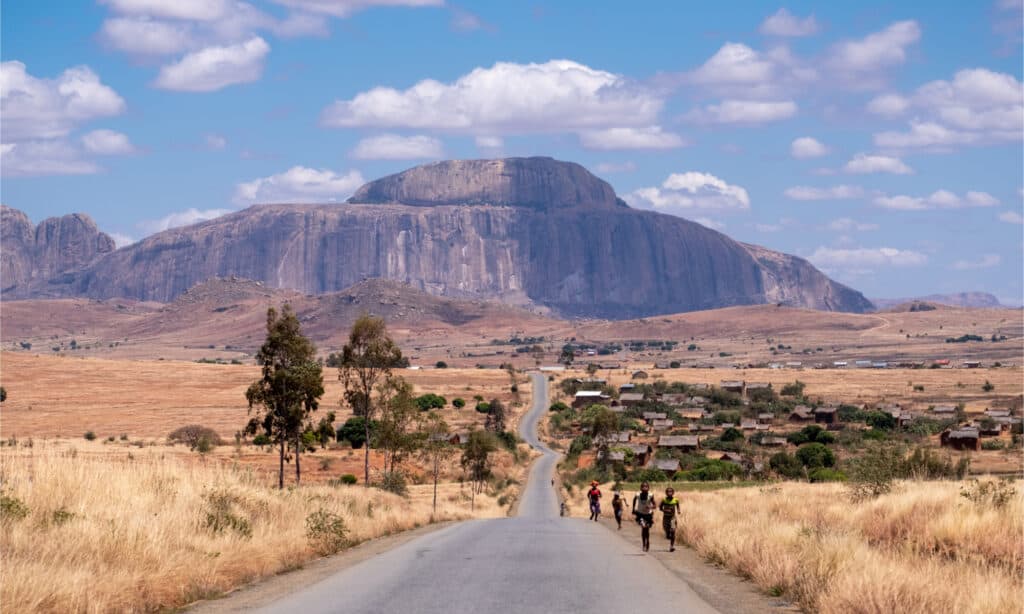
With a population of over 20 million people, Madagascar is one of the most populated islands in the world.
©Craig139/Shutterstock.com
Madagascar is an island country in the Indian Ocean, some 400 kilometers (250 miles) off the coast of East Africa across the Mozambique Channel. With a population of 28,479,665, it comes in at number six on our list. In Madagascar, the number of births per year far outnumbers the number of deaths; hence, the population significantly increases with every passing year. As the result of the island’s long isolation from neighboring continents, Madagascar is home to various plants and animals found nowhere else on Earth, making it a perfect destination for anyone who loves animals, nature, and adventure! Approximately 90% of all plant and animal species in Madagascar are endemic, with the lemur being the country’s spirit animal.
5. Sumatra, Indonesia
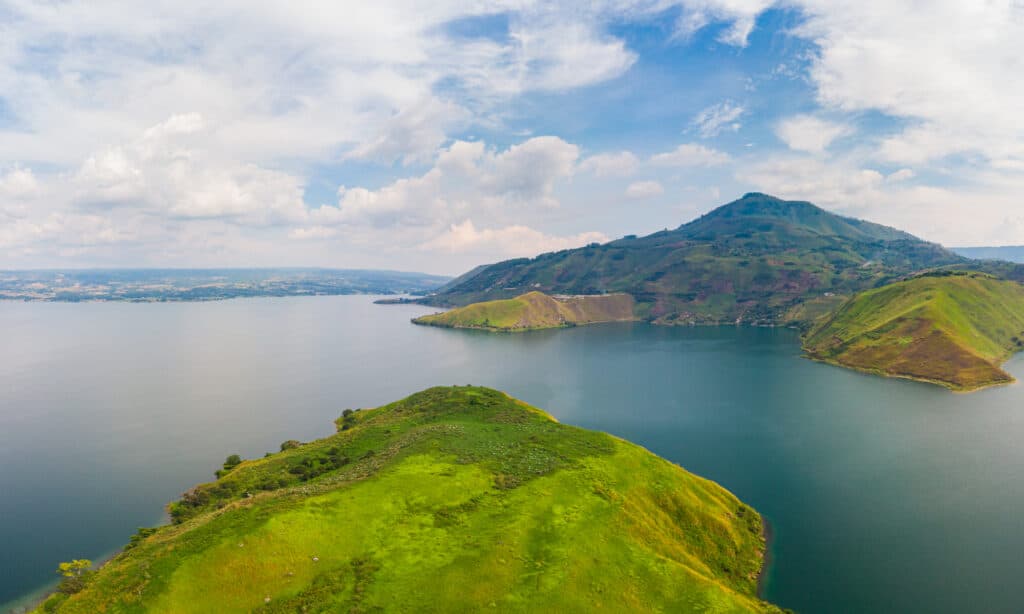
The largest island within Indonesian territory is Sumatra Island.
©Fabio Lamanna/Shutterstock.com
Sumatra is one of the western Indonesian Sunda Islands. It is the largest island within Indonesian territory and the sixth-largest island worldwide at 473,481 km2 (182,812 mi2). Home to about 58,880,000 people, Sumatra is truly an island where it feels like an adventure is just right around the corner. Sumatra’s abundant resources of tin, bauxite, petroleum, natural gas, forest, and agricultural products during the 1960s and 1970s supported these population increases and provided export income to aid other Indonesian areas. The island also has animals like the Sumatran tiger, rhinoceros, elephants, and orangutans living in the jungles. The true strength of nature manifests in the form of frequent earthquakes, volcanoes, and tsunamis. An exciting place full of life that makes you appreciate nature and could be the next destination you may wish to visit.
4. Luzon, Philippines

The Philippines’ largest island is Luzon.
©Aleksandar Todorovic/Shutterstock.com
Luzon is the Philippines’ largest island and the world’s 15th largest by land area. It is home to 64,260,312 people or more than half of the Philippine population. The Philippines’ capital, Manila, is located here, and it serves as the country’s economic and political hub. Migration is one of the key factors contributing to the region’s population growth because of the region’s proximity to the National Capital Region (NCR). The island is a popular tourist destination due to its beautiful lakes, active volcanoes, and breathtaking natural beauty. The famous Manila Bay is supposed to be where you can catch one of the most beautiful sunsets in the world. The country is still highly affected by Spanish and American leadership, with English as one of the official languages (next to Filipino).
3. Great Britain, United Kingdom

Great Britain is the largest portion of the United Kingdom.
©RobertWade3003/Shutterstock.com
The English Channel and the North Sea separate the island of Great Britain from the European mainland. It comprises the nations of England, Scotland, and Wales. It has a population of 66,397,821, making it the third most populated island on Earth. Given that the British Empire reigned over 23 percent of the world’s population, it has to be considered one of the most historically significant locations. Now, over 66 million people aren’t bad, and the island is the ninth-largest island on Earth and the largest European island with enough culture to offer from north to south and east to west. It also has about 70,000 recognized animal, plant, fungus, and microbe species. However, most evaluations show that the diversity of its wildlife is diminishing.
2. Honshu, Japan

Honshu Island is the largest and most populated island in Japan.
©BAMBELL/Shutterstock.com
Japan is an archipelago or group of 6,852 islands in this instance, with Honshu being the most heavily populated. It is Japan’s largest and most populated main island and the world’s second. With a population of 104,000,000, it makes up most of Japan, both population and landmass. Honshu is the historical and current epicenter of Japanese culture and power, hence the high tourism. Not only is the vibrant and dynamic metropolis of Tokyo around, but you can also go skiing, see old temples, and enjoy the gorgeous natural surroundings. The main crops produced in Honshu include fruits, vegetables, cereals, rice, and cotton. Only Honshu has rare species of the lichen genus Menegazzia. It is a one-of-a-kind island with the ideal blend of cutting-edge technology and traditional Japanese culture.
1. Java, Indonesia
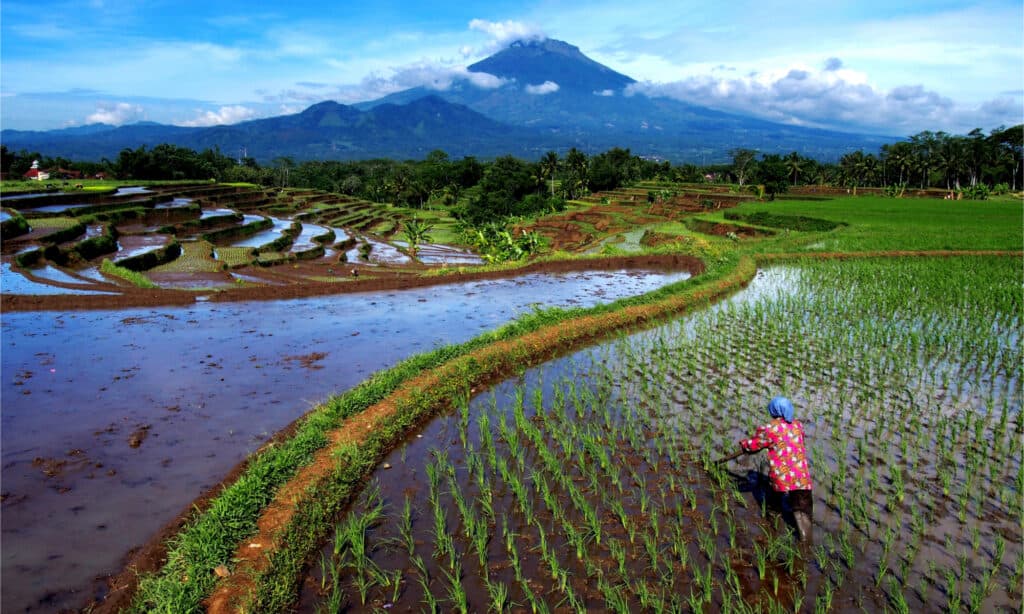
The island of Java is the most populated island in the world.
©em faies/Shutterstock.com
The most populated island in the world (if you don’t count continents as islands) is the island of Java, which has a population of 147,795,436 people and is about the size of North Carolina or England. It is one of the Greater Sunda Islands in Indonesia and is also the world’s 13th-largest island by landmass. As a result, it has served as the focal point of Indonesia’s lengthy and dramatic history. This lovely island offers it all: stunning, lush nature, a diverse culture, and the rush and bustle of Jakarta, Indonesia’s capital and megacity. Unfortunately, the expanding human population has harmed Java’s fauna. Java’s endemic species are now highly endangered, with several already extinct; Javan tigers and Javan elephants were once common, but both are now extinct.
Summary of The 10 Most Populated Islands in the World
| Rank | Island | Population |
|---|---|---|
| 1 | Java, Indonesia | 147,795,436 |
| 2 | Honshu, Japan | 104,000,000 |
| 3 | Great Britain, United Kingdom | 66,397,821 |
| 4 | Luzon, Philippines | 64,260,312 |
| 5 | Sumatra, Indonesia | 58,880,000 |
| 6 | Madagascar, Madagascar | 28,479,665 |
| 7 | Mindanao, Philippines | 27,021,036 |
| 8 | Taiwan, Taiwan | 23,865,820 |
| 9 | Borneo, Indonesia/Brunei/Malaysia | 23,053,723 |
| 10 | Sri Lanka, Sri Lanka | 21,919,000 |
The photo featured at the top of this post is © Craig139/Shutterstock.com
Thank you for reading! Have some feedback for us? Contact the AZ Animals editorial team.



